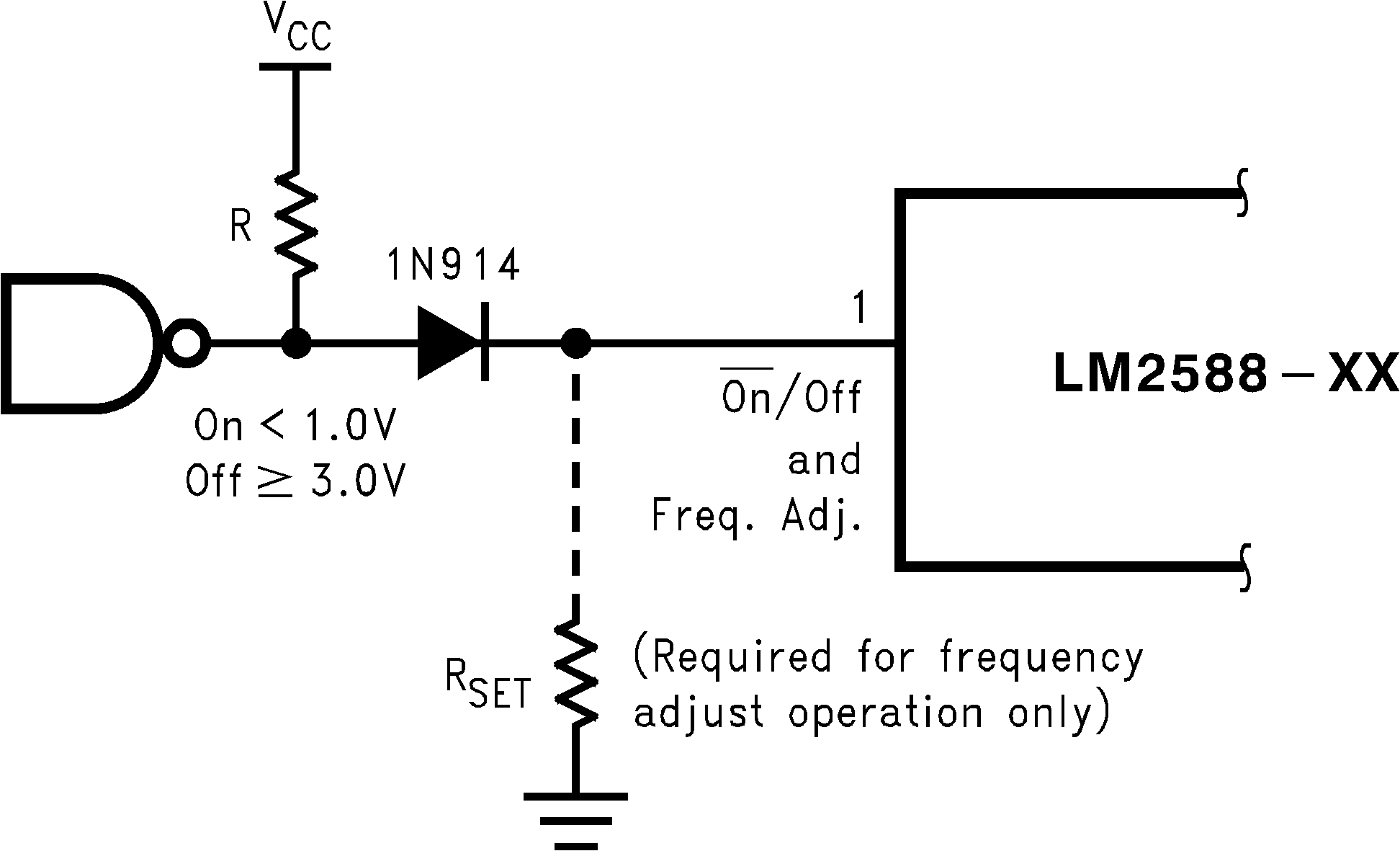SNVS117E April 1998 – June 2019 LM2588
PRODUCTION DATA.
- 1 Features
- 2 Typical Applications
- 3 Description
- 4 Revision History
- 5 Pin Configurations
-
6 Specifications
- 6.1 Absolute Maximum Ratings
- 6.2 ESD Ratings
- 6.3 Recommended Operating Ratings
- 6.4 Electrical Characteristics: 3.3 V
- 6.5 Electrical Characteristics: 5 V
- 6.6 Electrical Characteristics: 12 V
- 6.7 Electrical Characteristics: Adjustable
- 6.8 Electrical Characteristics: All Output Voltage Versions
- 6.9 Typical Characteristics
- 7 Detailed Description
- 8 Application and Implementation
- 9 Layout
- 10Device and Documentation Support
- 11Mechanical, Packaging, and Orderable Information
Package Options
Mechanical Data (Package|Pins)
Thermal pad, mechanical data (Package|Pins)
- KTW|7
Orderable Information
7.3.3 Shutdown Control
A feature of the LM2588 is its ability to be shut down using the ON /OFF pin (pin 1). This feature conserves input power by turning off the device when it is not in use. For proper operation, an isolation diode is required (as shown in Figure 20).
The device will shut down when 3 V or greater is applied on the ON /OFF pin, sourcing current into pin 1. In shut down mode, the device draws typically 56 μA of supply current (16 μA to VIN and 40 μA to the ON /OFF pin). To turn the device back on, leave pin 1 floating, using an (isolation) diode, as shown in Figure 20 (for normal operation, do not source or sink current to or from this pin—see the next section).
 Figure 20. Shutdown Operation
Figure 20. Shutdown Operation